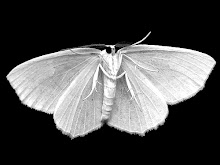
After watching, earlier this week, Martin Scorsese's documentary "The Blues: Feels Like Going Home", a multiplicity of images and thoughts came to mind bonding the film, to my memories and experiences as a musician. The documentary was first released in 2003 by American PBS TV, as part of a series of seven films portraying the Blues through the eyes of seven famous directors (Scorsese, Charles Burnett, Clint Eastwood, Mike Figgis, Marc Levin, Richard Pearce and Wim Wenders), and is now being revisited by Australia's ABC Blues Festival Project through its iView website
Prompted by the immediate recognition that one of the first clips of Scorsese's documentary, showing the Fife & Drum Music of the Mississipi, had a very similar musical "feel" to that of the Brazilian Bandas de Pifano and some of its maracatus, I was immediately taken back a few years, to a memory of visiting one of the most amazing sites in the world: Pirangi's cashew tree, today one of the biggest tourist attractions in the NE Region of Brazil. In my vision, Pirangi's cashew tree and the subject of Scorsese's documentary -- the Blues and, more generally, modern western popular music -- suggested some sort of self-similarity in both their genesis and geometries.
After being planted in 1888, Pirangi's tree suffered from two genetic mutations. First, the branches grew sideways, instead of upwards like other sister cashew trees planted in nearby patches of soil. Then, the sideways branches became so heavy, they touched down and grew into the ground. At that stage, buried branches suffered a second mutation, its trunk cells changing into root cells, which originated "new" trees, growing initially upwards, then again sideways, into the ground and so on, so forth. Now, more than 80 interconnected tree "units" cover an area of about 8,500 m2, with a perimeter of some 500m, altogether forming the biggest cashew tree in the world.
In terms of genesis, both Pirangi's cashew tree and the African musical origins of modern western music have initially suffered influences from degenerative-type "disorders", which blossomed into something that became not only generative, but inspiring and unique. In the Blues' case, the imposed "mutation" was provoked by the crime of slavery committed against African families, and the slave trade routes which ripped Africans from their homeland and culture centuries ago. After being transported in horrific conditions to several parts of the "New World", African slaves were forced into new soil. They then suffered cultural transformations that were responsible for the appearance of the Blues, and ultimately grew in all directions, to resurface as several different styles adding up to a substantial chunk of what is generally called today modern western popular music.
The amazing unifying vision that appeared in my mind's telly, while riding my bicycle to work the next day, was that of a "musical" tree, reflecting Pirangi's, but growing out of Africa, dipping its branches in the Atlantic Ocean, resurfacing near the coasts of North and South Americas, and the Caribbean, then dipping into the fertile soils of the Mississipi Delta, of the states of Bahia and Rio de Janeiro, in Brazil, and the islands of Barbados, Trindad and Cuba. In these new places, they grew roots, new trees, and then branches that expanded and dipped back into the soils of virtually every country on earth today, where new roots, trees and branches continue to grow further, without losing their link to the original tree in Africa.
What a bike ride! Lucky Perth's traffic isn't anything like my hometown Rio de Janeiro, so my daydreaming wasn't a problem, and I did finally arrive safely at work.
After going back home and surfing a little more the net, I figured that such contagious expansion process, that I visualized in my "dangerous" bike ride, explains, according to musicologists, much of how most modern musical genres and styles have developed from their classical western, African or Indian, folk, sacred/canonical and pop musical ancestors. At every new stage of evolution of a "mother" genre or style, some parts of the genetic code of the ancestor is kept, in a way that some degree of self-similarity is held throughout the development process. So much that the Pirangi cashew tree now became, for me at least, an analogy for music and its evolution process throughout human history.
(Image: Celtic Tree of Life, borrowed from Welsh artist Jen Delyth ©1990: kelticdesigns.com)

No comments:
Post a Comment